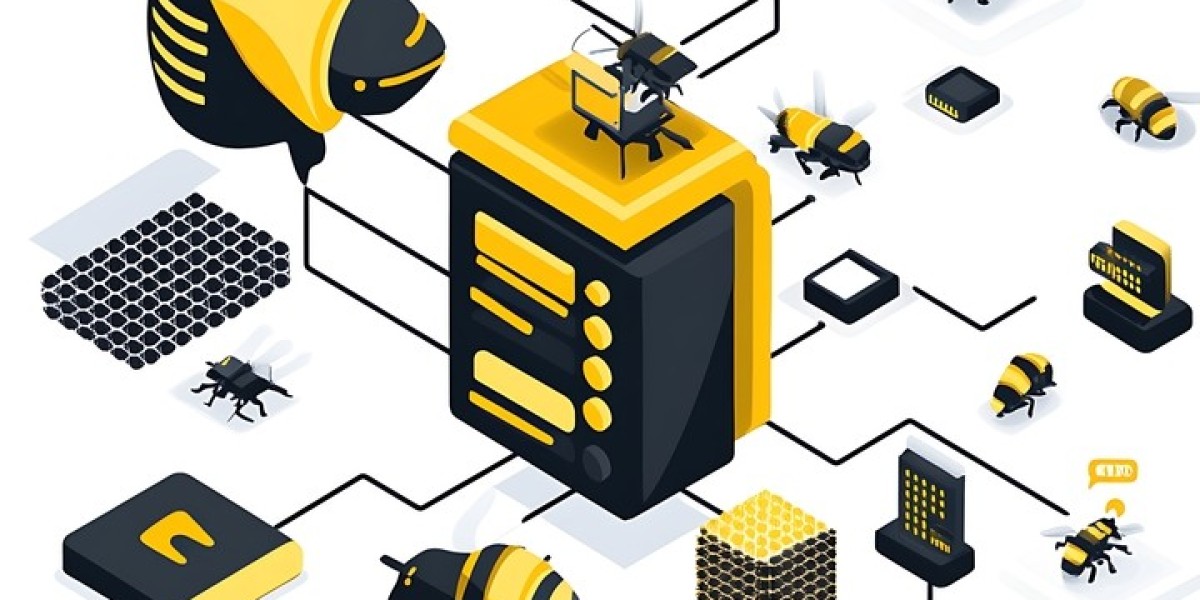The global honeybee population is facing unprecedented challenges. From pesticide exposure and habitat loss to climate change and disease, honeybee colonies have been in steady decline. These little pollinators are responsible for one-third of the food we eat, making their survival a matter of global concern. In response, a modern solution is buzzing to the forefront IoT Beehive Monitoring Systems.
This article explores how smart technologies are transforming traditional apiary practices, the best methods of beekeeping, and how this innovation could be the key to saving beekeeping as we know it.
Why the Honeybee Population Is Declining
Over the past few decades, beekeepers worldwide have observed a phenomenon known as Colony Collapse Disorder (CCD), where the majority of worker bees disappear, leaving behind a queen and a few nurse bees. This mysterious trend has been linked to various environmental stressors:
Pesticide Use
Mite Infestation (especially Varroa mites)
Climate Change
Poor Nutrition due to Monoculture Farming
Viruses and Bacterial Infections
The decrease in honeybee populations threatens ecosystems and food security. As a result, tech innovators have introduced IoT (Internet of Things) solutions to monitor and manage hive conditions in real-time
What Is an IoT Beehive Monitoring System?
An IoT Beehive Monitoring System involves embedding smart sensors and communication technologies inside and around beehives. These systems allow beekeepers to monitor:
Temperature and Humidity Levels
Bee Activity (through sound and motion sensors)
Weight Changes (indicating nectar collection or loss of bees)
Hive Entrance Movement (via cameras or infrared sensors)
Intrusion Detection (from predators or pests)
The data is transmitted to a mobile app or dashboard where beekeepers can remotely check hive health and receive alerts if anything abnormal occurs. This real-time insight reduces the need for physical inspections, which can be disruptive to the colony.
Modern Methods of Beekeeping with IoT Integration
Traditional beekeeping relies heavily on manual labor and periodic inspections. While effective to some degree, it often fails to catch problems early enough. IoT has introduced new methods of beekeeping that emphasize preventive action and precision management.
Here are some modern practices:
1. Predictive Maintenance
By analyzing temperature and humidity trends, IoT systems can detect early signs of disease or swarming behavior, enabling timely intervention.
2. Automated Alerts
Smart hives send notifications for temperature drops (especially during winter), excessive moisture, or potential pest intrusion.
3. Remote Monitoring
Beekeepers can monitor multiple hives across different locations from a central dashboard, improving efficiency and reducing travel time.
4. Data-Driven Decisions
Long-term data helps in understanding seasonal behavior, nectar flows, and optimal feeding schedules.
How IoT Is Saving Beekeeping
The biggest advantage of IoT in beekeeping is preservation of both bee colonies and the livelihood of beekeepers. Here’s how these systems are actively An exclusive role of IoT in saving beekeeping
Early Detection of Diseases:
Smart sensors identify fluctuations in temperature and humidity that signal the onset of diseases like foulbrood or nosema.Climate Adaptation:
In regions with extreme winters or hot summers, heating and cooling systems can be automated based on real-time sensor feedback.Reduced Colony Stress:
Less frequent hive opening means less stress for bees, leading to better productivity and lower mortality.Resource Optimization:
Farmers can allocate time, sugar syrup, or medications more efficiently with real-time needs assessments.Enhanced Breeding Programs:
With accurate data, beekeepers can selectively breed colonies with stronger resistance to pests and environmental changes.
Case Studies and Real-Life Impact
1. Arnia Remote Hive Monitoring (UK)
This IoT system monitors hive acoustics, allowing beekeepers to predict swarming or queenlessness by detecting changes in bee sound frequencies.
2. BeeHero (USA/Israel)
BeeHero integrates commercial pollination and sensor data to optimize hive placement, health, and productivity across massive apiary operations.
3. Pollenity (Bulgaria)
This startup offers “Beebot,” a plug-and-play hive monitor that tracks weight, temperature, and humidity, perfect for small-scale or hobbyist beekeepers.
These technologies have contributed to higher survival rates, better honey yields, and improved bee behavior understanding.
Challenges in Implementing IoT in Beekeeping
Despite its benefits, integrating IoT into beekeeping does face challenges:
Cost: Initial investment in sensors and platforms may deter small-scale farmers.
Connectivity: Rural areas may lack the stable internet needed for real-time data transmission.
Data Management: Beekeepers need basic digital literacy to analyze and act on data effectively.
However, as IoT becomes more affordable and accessible, these barriers are gradually diminishing.
The Future of Smart Beekeeping
With the increasing push for sustainable agriculture, IoT-based solutions are expected to become standard in modern beekeeping. Coupled with AI, future systems may not only alert beekeepers but also autonomously resolve minor issues, such as adjusting ventilation or deploying natural pest repellents.
Drone-based hive inspection and blockchain for honey traceability are also on the horizon.
Conclusion
IoT Beehive Monitoring Systems represent a technological leap that directly contributes to saving beekeeping and restoring Intensive Profound Insights on honeybee populations. By combining ancient practices with smart sensors and data analytics, beekeepers today are better equipped than ever to protect their colonies and ensure the health of our planet’s most vital pollinators.






